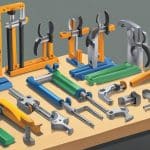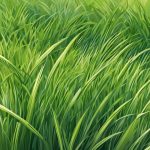Types Of Hooks
Hooks are an essential part of writing and everyday life. Whether you’re crafting an essay or hanging up a picture, the right hook can make all the difference. In writing, a hook is the first sentence or two of an essay that grabs the reader’s attention and draws them in. It sets the tone for the rest of the piece and can make or break the reader’s interest.
Understanding hooks in writing is crucial for any writer. There are different types of hooks that writers can use to engage their readers, including rhetorical questions, anecdotes, and statistics. Choosing the right type of hook for your piece depends on the tone you want to set and the audience you’re writing for. In everyday life, hooks come in many forms, from S-shaped hooks for hanging things to fishing hooks for catching fish. Selecting the right hook for the task at hand is essential to achieving the desired outcome.
Key Takeaways
- Hooks are an essential part of writing and everyday life.
- There are different types of hooks that writers can use to engage their readers.
- Selecting the right hook for the task at hand is essential to achieving the desired outcome.
Understanding Hooks in Writing

The Importance of an Essay Hook
An essay hook is a crucial component of any essay. It is the opening sentence or paragraph that captures the reader’s attention and makes them want to read on. The hook sets the tone for the essay and establishes the writer’s voice. A well-crafted hook can make the difference between a mediocre essay and an exceptional one.
Varieties of Essay Hooks
There are several types of hooks that writers can use to engage their audience. These include:
Question Hook
A question hook is a type of hook that poses a question to the reader. It can be a rhetorical question or a direct question that requires an answer. The purpose of a question hook is to get the reader to think about the topic and to encourage them to continue reading.
Quotation Hook
A quotation hook is a type of hook that uses a quote from a famous person or a well-known source. The quote should be relevant to the topic and should capture the reader’s attention. The purpose of a quotation hook is to establish the writer’s credibility and to make the reader interested in what they have to say.
Statistic Hook
A statistic hook is a type of hook that uses a statistic or a fact to grab the reader’s attention. The statistic or fact should be relevant to the topic and should be surprising or shocking. The purpose of a statistic hook is to make the reader interested in learning more about the topic.
Anecdotal Hook
An anecdotal hook is a type of hook that uses a personal story to engage the reader. The story should be relevant to the topic and should be interesting or entertaining. The purpose of an anecdotal hook is to make the reader feel connected to the writer and to make them want to read more.
In conclusion, understanding the different types of hooks in writing is essential for any writer who wants to engage their audience and create a compelling essay. By using a variety of hooks, writers can capture their reader’s attention and make them interested in what they have to say. When writing an essay, it is important to choose the right hook for the topic and to use it effectively to create a memorable and engaging essay.
Fishing Hooks Fundamentals
Anatomy of a Fishing Hook
Fishing hooks are small but essential components in an angler’s fishing gear. Hooks come in various shapes and sizes and are designed for different types of fishing and fish species. Understanding the anatomy of a fishing hook is crucial in selecting the right hook for a specific fishing situation.
The basic parts of a fishing hook include the point, eye, shank, bend, and barb. The point is the sharp end of the hook that penetrates the fish’s mouth. The eye is the loop or hole at the opposite end of the point where the fishing line is attached. The shank is the straight section between the point and the eye. The bend is the curved portion of the hook that determines how the hook sets in the fish’s mouth. The barb is the small protrusion on the hook that prevents the fish from slipping off.
Different types of hooks have variations in their anatomy, such as the shape of the bend, the size of the barb, or the design of the eye. Some hooks have a knife-edge point that penetrates the fish’s mouth easily, while others have a rounded or curved point that holds the bait better. Hooks can have a ringed, brazed, needle, or tapered eye, depending on the type of fishing line used.
Types of Fishing Hooks
There are several types of fishing hooks, each designed for a specific fishing technique or fish species. Here are some of the most common types of fishing hooks:
-
Circle Hooks: Circle hooks have a rounded bend and are ideal for catch-and-release fishing as they tend to hook the fish in the corner of the mouth, reducing the risk of injury.
-
Treble Hooks: Treble hooks have three points and are commonly used in lures for catching fish that strike aggressively, such as bass or pike.
-
Weedless Hooks: Weedless hooks have a wire guard that prevents the hook from snagging on weeds or other underwater obstacles. They are ideal for fishing in areas with heavy vegetation.
-
Barbless Hooks: Barbless hooks have no protrusion on the shank, making it easier to remove the hook from the fish’s mouth and reducing the risk of injury to the fish.
Understanding the different types of fishing hooks and their anatomy is essential in selecting the right hook for a specific fishing situation. Whether you are fishing for sport or food, having the right hook can make all the difference in your fishing success.
Selecting the Right Hook
Choosing the right hook is crucial for any angler. The type of hook you select depends on various factors, including the type of fishing you plan to do, the size of the fish you are targeting, and the bait you are using. In this section, we will discuss how to select the right hook by size and material and for specific types of fishing.
By Hook Size and Material
Hooks come in different sizes and materials. The size of the hook is determined by its gauge and gape. The gauge refers to the thickness of the wire, while the gape refers to the distance between the hook point and the shank. Some common hook sizes include 1/0, 2/0, 3/0, and 4/0.
The material of the hook is also important. Hooks can be made of different materials, such as carbon steel, stainless steel, and nickel-plated steel. Carbon steel hooks are known for their strength and sharpness, while stainless steel hooks are corrosion-resistant and durable.
For Specific Types of Fishing
Different types of fishing require different types of hooks. For example, bait holder hooks are great for using live bait, while worm hooks are ideal for using worms as bait. Jig hooks are perfect for jigging, while octopus hooks are suitable for catching small to medium-sized fish.
Aberdeen hooks are ideal for catching panfish, while kahle hooks are great for catching larger fish such as bass and catfish. Siwash hooks are commonly used for salmon fishing, while circle hooks are preferred for catch-and-release fishing.
In conclusion, selecting the right hook is crucial for any angler. By considering the size and material of the hook and the type of fishing you plan to do, you can increase your chances of making a successful catch.
Hooks in Everyday Use
Hooks are simple yet versatile fastening devices that come in a variety of designs, sizes, and materials. They are widely used in homes and workplaces for hanging everything from coats and bags to tools and equipment. Different hook designs are available to suit different needs and preferences.
Different Hook Designs for Home and Work
Over-the-Door Hooks
Over-the-door hooks are a popular choice for hanging items on the back of doors. They are designed to fit over the top of the door and come in a variety of sizes and materials. Over-the-door hooks are ideal for hanging coats, hats, bags, and other items that need to be easily accessible.
Coat Hooks
Coat hooks are a classic type of hook that can be found in many homes and workplaces. They are designed to hold coats, jackets, and other clothing items. Coat hooks come in a variety of styles and materials, including wood, metal, and plastic.
Material Options
Hooks are made from a variety of materials, including metal, plastic, and wood. Metal hooks are strong and durable, while plastic hooks are lightweight and easy to install. Wooden hooks are a popular choice for their natural look and feel.
Picture Hooks
Picture hooks are designed to hold pictures and other wall art. They come in a variety of sizes and styles, including J-hooks and wall hooks. Picture hooks are easy to install and can be used to hang everything from small frames to large canvases.
J-Hooks
J-hooks are a popular type of hook that is designed to hold tools and other equipment. They come in a variety of sizes and materials, including metal and plastic. J-hooks are ideal for hanging items such as shovels, rakes, and other gardening tools.
Wall Hooks
Wall hooks are a versatile type of hook that can be used to hang a variety of items. They come in a variety of sizes and materials, including metal, plastic, and wood. Wall hooks are ideal for hanging everything from coats and bags to tools and equipment.
Hook Sizes
Hooks come in a variety of sizes, ranging from small picture hooks to large utility hooks. It is important to choose the right size hook for the item you are hanging to ensure that it is secure and stable.
In summary, hooks are a simple yet versatile fastening device that can be used in a variety of settings. Different hook designs are available to suit different needs and preferences, including over-the-door hooks, coat hooks, picture hooks, J-hooks, wall hooks, and utility hooks. When choosing a hook, it is important to consider the material, size, and weight capacity to ensure that it is suitable for the item you are hanging.
Crafting an Engaging Hook
Crafting an engaging hook is essential for capturing the attention of your readers and keeping them interested in your writing. In this section, we will explore some techniques for captivating your audience and matching the hook to your writing style.
Techniques for Captivating Your Audience
One technique for crafting an engaging hook is to use personal experience or a short story that relates to the topic of your writing. This can help to create a sense of relevance and connection with your readers, making them more invested in what you have to say.
Another technique is to use descriptive language that paints a vivid picture in the reader’s mind. This can help to create a sense of atmosphere and draw the reader into your writing.
Using quotations can also be an effective way to capture your reader’s attention. By quoting a well-known figure or an expert in the field, you can add credibility to your writing and pique the reader’s interest.
Matching the Hook to Your Writing Style
When crafting an engaging hook, it is important to consider your writing style and the tone you want to convey. For example, if you are writing a humorous piece, you may want to use a witty or playful hook to set the tone.
On the other hand, if you are writing a serious or academic piece, you may want to use a more formal or informative hook that sets the stage for the rest of your writing.
By matching the hook to your writing style, you can create a cohesive piece of writing that flows smoothly and keeps your readers engaged from beginning to end.






